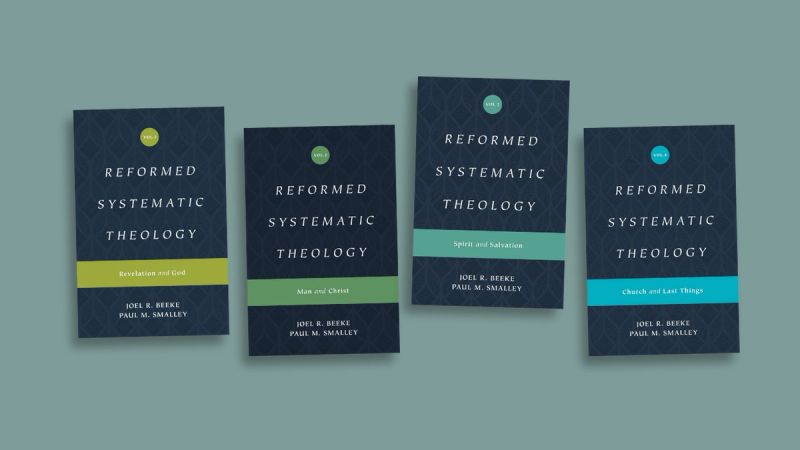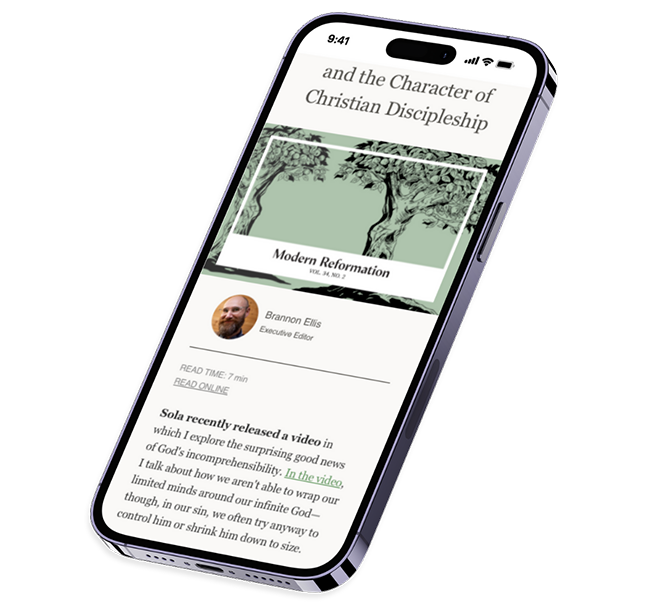To enjoy the other installments in this review series, click or tap here.
Theology must affect our lives if it has been rightly understood. Still, we easily think of doctrine as ideas locked away in the pages of books or hanging in the air of lecture halls. Where does theology come to bear upon us as we live before the Lord? What is the intersection of doctrine and life?
Enter the newest installment of Joel Beeke and Paul Smalley’s Reformed Systematic Theology. This fourth volume culminates their ambitious project to provide a thorough overview of the main areas of doctrine from a classical Reformed perspective. In this book, Beeke and Smalley address, in two respective sections, the topics of the church and last things. As has been the pattern for most of this review series, we will devote a review post to each major section.
This review considers Beeke and Smalley’s treatment of ecclesiology—the doctrine of the church. Hence, we come to consider how theology comes to bear upon our lives. After all, the church is the place where the truth of God’s word is proclaimed to us in preaching, shown to us in the sacraments, and begins to take root in our practice as we live together as the community of grace. The discussion of ecclesiology falls into three sub-sections: the church’s nature, her authority and work, and her means of grace. These sub-sections will structure our review.
The church’s nature shows how we are a people who belong to God. That relation puts the church in a heavenly perspective that shows how we are more than simply an organization gathered around a shared cause. In this respect, one of this volume’s great strengths is its theological grounding for the church. It eschews any sort of pragmatic notions about what the church is and what we are called to do. We are a people whom God has brought together for his special possession that we might worship him.
This book also manages a new level of achievement for synthesizing a lot of data. I will admit that, often when I begin to read through the catalog of images and metaphors for the church (or any other catalog), I start to zone out. When details proliferate, the significance of those details frequently fades into the background as the discussion lacks any thread to tie the details together. Beeke and Smalley, however, have produced a solid, informative, and even engaging outline of the biblical descriptions of the church. They provide explanation and application for the biblical imagery. Perhaps the standout contribution of this section on the church’s nature is the survey of redemptive history that shows the unity of God’s people in Old and New Testaments while also giving care to show aspects of development and change across the progress of the covenant of grace.
The second section highlights even more emphatically the church as the intersection of doctrine and practice. This treatment about the church’s authority and work focuses on the issues of governance and mission. Beeke and Smalley give a lot of attention to the church’s officers and denominational structures. This attention is such a refreshing inclusion in this project because most systematic theologies neglect what the church is doing on the ground, so to speak. By nature, systematic theology gravitates toward theoretical concepts, which puts more focus on the ideal of the church. Throughout their volumes, Beeke and Smalley have stressed the need for practical application. That distinctive has the most teeth perhaps here as they explain that the church is not ethereal nor conceptual. The church is Christ’s body, which means it has to operate and work with some sort of structure. It is invigorating to see this approach to doctrine do real justice to how the church’s theological identity is still bound into our concrete existence as God’s people who need leadership and structure.
The church’s mission tightens the intersection of doctrine and life. As Beeke and Smalley tackle the issue of the church’s relationship to the civil government and the church’s calling, they maintain a good, winsome, and balanced approach to the church’s spirituality. The conclusions about the church in relation to the government are timely. On the one hand, they show how our societies have responsibility and accountability before God. On the other hand, the church does not advance by any civil power or authority. These arguments deserve profound consideration amid ongoing discussion about the church’s relation to culture. This presentation gives way to the church’s mission to facilitate worship by evangelizing and discipling. In this respect, public worship takes precedent on both fronts.
The priority of public worship leads straight into the third section on ecclesiology, which addresses the means of grace. In many ways, this section articulates standard Reformed notions about how God uses word, sacrament, and prayer to do his spiritual work upon his people. The theology is great, but a few features are noteworthy.
First, because Beeke and Smalley come from differing traditions (Dutch Reformed and Baptist respectively), potentially as a first in full treatments of systematic theology, this volume includes both perspectives. The main chapter defends the Reformed view of infant baptism and the mode of sprinkling or pouring. Smalley then provides an appendix written in defense of believers only baptism and the exclusive legitimacy of the mode of immersion. Apart from content, this approach shows the authors’ commitment to irenicism. Without beginning to dispute the position itself, one of Smalley’s arguments seems worth questioning. He writes, “Infants cannot commit themselves to follow Christ or embrace the gospel with faith and repentance.” (pg. 1154) If true, this premise seems to condemn every infant who dies in infancy to hell. Salvation is always by faith in Christ, which would be true for infants as well. Beeke and Smalley argued in volume three of this project that God sovereignly grants the gift of faith. Why can he not do that for infants to save them, especially those who will die before they reach an age where they could profess faith. If Smalley’s point is actually that infants are unable to articulate a profession of faith in Christ, then he is certainly correct. This premise is acceptable on both sides of this debate. Still, it avoids resigning every child who dies too young to make profession to eternal torment. I hope this argument is simply a lack of clarity and precision on Smalley’s part, else I fear he argues far too much just to support his view of who should receive the sign of entry into the covenant community.
Second, this section stands out among discussions in systematic theologies for its attention to the actual execution of the means of grace. In this respect, Beeke and Smalley have answered questions that people often have but that frequently get overlooked in most overviews of systematic theology. For example, they address the issue of whether musical instruments belong in worship. This question is usually omitted in systematic theologies, even if the place of singing is addressed at all. This feature of Beeke and Smalley’s project shows that it really is a systematic theology aimed for practice in the church. They have not limited themselves merely to the theoretical issues concerning what the means of grace are. They have also provided starting points for how to deal with the real implementation of the means of grace in the church’s life.
This section on ecclesiology is one of the strongest in Beeke and Smalley’s whole project. The discussions about polity, officers, denominational structures, practices for observing the means of grace, and considerations for continuing reform in the church are standout features in this first half of volume four. These features also help take this project beyond the usual remit of systematic theology to make it also partly a manual for church practice. This section on ecclesiology in particular is a real delight and will prove immensely helpful to readers.








